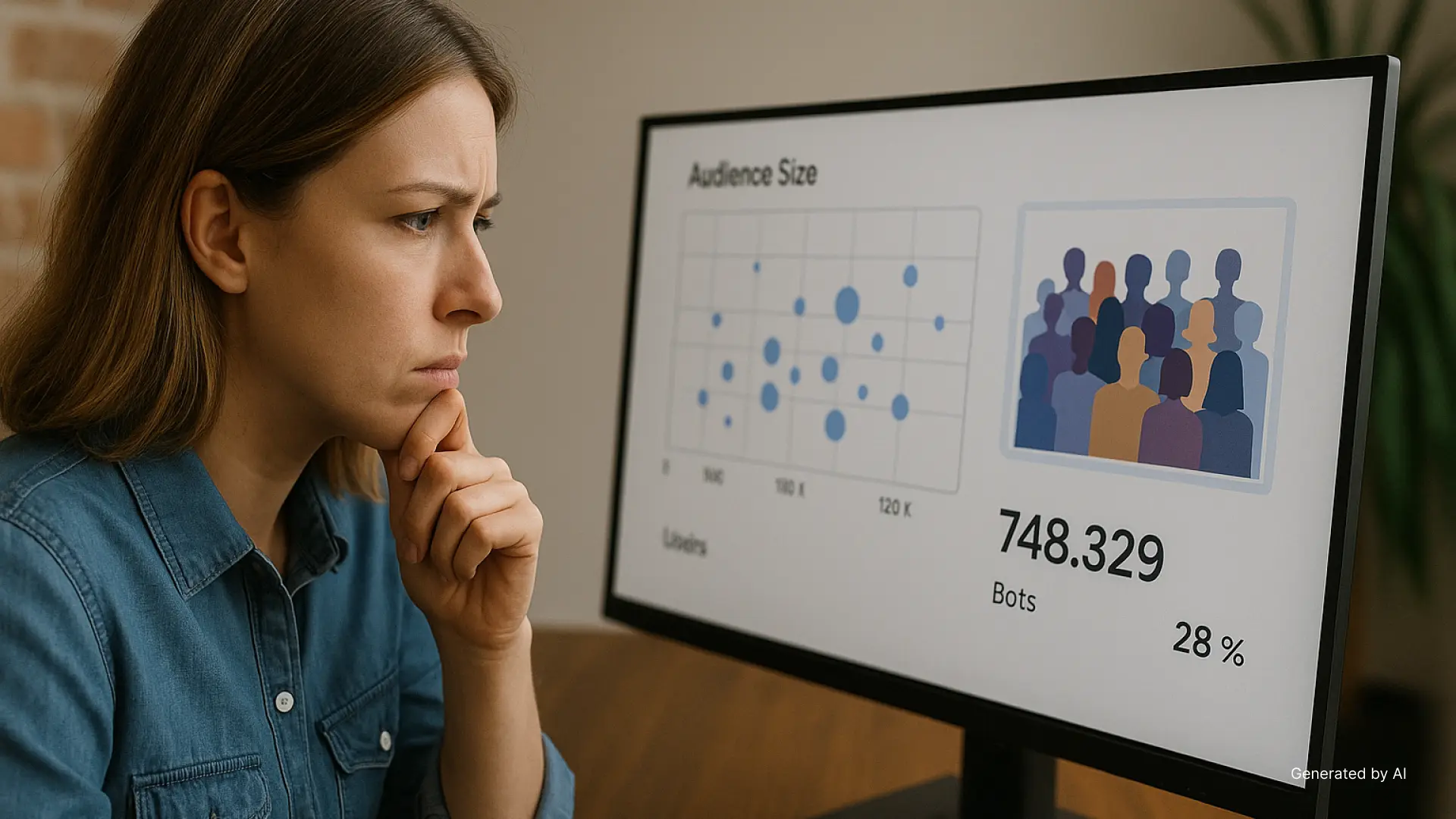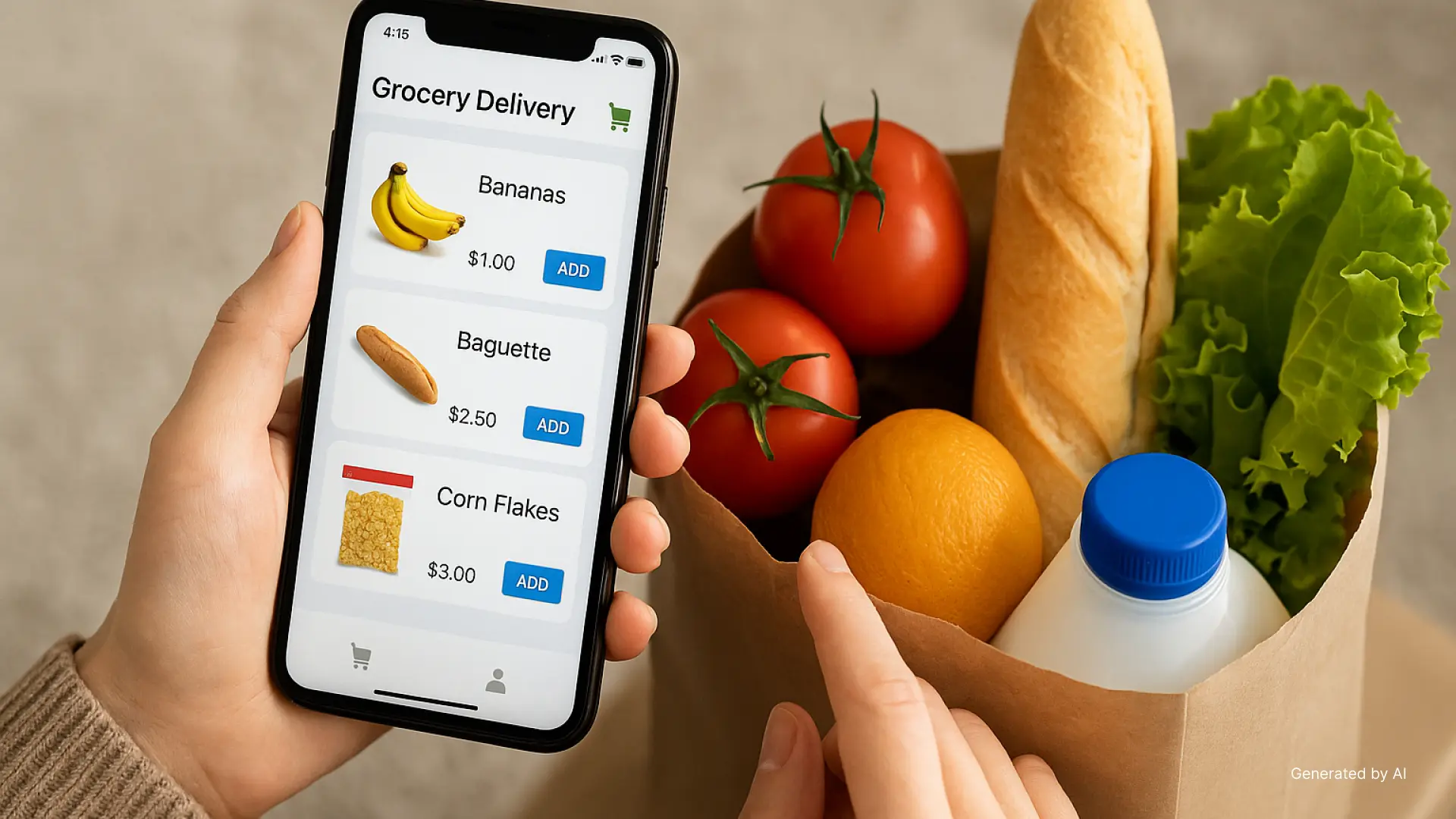Email Marketing Innovations for Higher ROI | Jordie’s Creative Agency Tips
Email marketing, a cornerstone of digital strategy, continues to prove its resilience and effectiveness in a rapidly evolving marketing landscape. However, achieving a significant return on investment (ROI) in 2025 demands more than just sending out newsletters. In a world where inboxes are flooded, businesses must embrace innovation to capture attention, engage their audience, and ultimately drive conversions. This guide explores the primary email marketing innovations that are set to redefine success in 2025, offering insights and actionable strategies to elevate your ROI, with expert tips from Jordie’s Creative Agency.
The Rise of AI-Powered Personalization for Enhanced Engagement
The future of impactful email marketing lies in the ability to deliver hyper-personalized experiences, and artificial intelligence (AI) is at the forefront of this transformation. AI-powered personalization in 2025 transcends basic personalization tokens like name insertions. It involves sophisticated analysis of vast datasets, including a subscriber’s browsing history, purchase behavior, and stated preferences, to construct individual profiles. This granular understanding allows marketers to predict future actions and tailor email content with unprecedented accuracy. For instance, AI can automatically feature products a customer recently viewed on your website or suggest services based on their past interactions with your brand. This level of customization extends to crafting personalized subject lines that resonate with individual recipients and dynamically adjusting email content in real-time based on user behavior. Furthermore, AI algorithms can analyze optimal sending times for each subscriber, ensuring your message reaches them when they are most likely to engage. The power of AI also extends to automating A/B testing, continuously refining email elements to identify what resonates best with specific audience segments. This shift towards individual-level customization, moving away from broad segmentation, directly contributes to higher open rates, improved click-through rates, and ultimately, a substantial increase in higher ROI.
Dynamic content personalization, often powered by AI, takes this a step further. Instead of creating multiple email versions for different segments, marketers can utilize a single email template that displays varying content blocks based on predefined rules and user data. For example, a single promotional email can showcase running shoe promotions to a subscriber who recently browsed running shoes, while simultaneously displaying hiking gear offers to someone interested in outdoor adventures. Major companies like Amazon, Netflix, and Spotify have successfully implemented dynamic content to provide highly relevant experiences at scale, demonstrating its potential to maximize efficiency and impact. By delivering the right message to the right person at the right time, AI-driven personalization ensures that email marketing efforts are not just seen, but truly connect with the audience, driving higher ROI.
Interactive Emails: Creating Immersive and Actionable Experiences
In the quest to break through inbox clutter, interactive emails are emerging as a powerful tool for capturing attention and driving engagement. These emails move beyond static content by incorporating engaging, action-driven elements directly within the email body. Users can now interact with polls, quizzes, image carousels, sliders, and even complete in-email purchases without being redirected to external web pages, often facilitated by Accelerated Mobile Pages (AMP) technology.1 This direct interaction significantly boosts engagement metrics like click-through rates and the time spent reading the email, while also providing marketers with valuable real-time insights into user preferences. The trend of incorporating interactive content is set to increase in 2025, with marketers leveraging quizzes and surveys to gather immediate data for enhanced segmentation and personalization.
Examples of interactive elements are diverse and impactful. Image carousels allow subscribers to browse through multiple product images or features without leaving their inbox. Quizzes and polls offer a fun and engaging way to collect user opinions and preferences directly within the email. Shoppable emails enable users to add items to their cart and even complete purchases without navigating to a website, streamlining the buying process. Embedded forms for sign-ups, event registrations, and feedback collection further reduce friction and encourage immediate action. By transforming the passive experience of reading an email into an active one, interactive emails capture attention, encourage participation, and ultimately lead to increased conversion rates and a stronger connection with the brand, directly impacting higher ROI.
Prioritizing Privacy and Building Trust in Your Email Campaigns
As data privacy regulations like GDPR and CCPA become more stringent, and consumer awareness of data usage grows, prioritizing privacy and data protection is no longer just a matter of compliance but a crucial element of building trust and fostering long-term customer relationships. In 2025, marketers must place a greater emphasis on collecting zero-party data – information willingly and explicitly shared by users through methods like preference centers and surveys, and be transparent about how this data is being utilized. The impact of privacy updates, such as Apple’s Mail Privacy Protection (MPP) which limits the visibility of open rates, is also prompting marketers to shift their focus towards alternative engagement metrics like click-through rates and conversions. This necessitates a move towards strategies like contextual targeting and predictive analytics, which rely less on traditional tracking methods.
Furthermore, AI transparency is emerging as a critical aspect of building trust in email marketing. Brands are increasingly recognizing the importance of being open and honest with their subscribers about their use of AI in email campaigns, whether it’s for content generation, personalization, or automation. This transparency can be communicated through updated terms and conditions, dedicated AI policies, and mentions in sign-up forms and newsletters. In an era where consumers are increasingly wary of how their data is handled, demonstrating a commitment to privacy and transparency is essential for building and maintaining trust. This trust forms the foundation for stronger customer relationships and greater brand loyalty, ultimately contributing to sustained ROI in the long run.
Optimizing for Mobile: A Non-Negotiable for Email Success
With the overwhelming majority of emails now being opened on mobile devices – over 70% according to recent data – adopting a mobile-first design approach is no longer optional; it is a fundamental requirement for email marketing success in 2025. This means prioritizing the mobile experience in every aspect of email design and development. Key elements of a mobile-first strategy include utilizing responsive design that seamlessly adapts to various screen sizes, optimizing fonts, buttons, and images for touch-friendliness and quick loading on mobile devices. Shorter and more concise messaging is crucial for capturing attention on smaller screens, and ensuring compatibility with dark mode is increasingly important for user preference and readability. Furthermore, integrating SMS and in-email push notifications can further enhance the mobile experience by providing timely and relevant updates. Neglecting mobile optimization in today’s digital landscape is a surefire way to miss out on significant engagement and potential conversions. A seamless and user-friendly mobile experience is essential for maximizing reach, improving engagement rates, and ultimately driving higher ROI from email marketing efforts.
Embracing Sustainability and Ethical Practices in Email Marketing
As consumers become increasingly conscious of the environmental and social impact of their choices, sustainability and ethical marketing are gaining significant traction in the email marketing sphere. In 2025, brands are recognizing the importance of aligning their marketing practices with these values to resonate with a growing segment of their audience. This trend manifests in various ways, including reducing email frequency to minimize digital clutter, optimizing data storage to lower the carbon footprint, actively promoting green initiatives, highlighting diversity and ethical sourcing practices, and utilizing energy-efficient design techniques in emails. Authenticity is paramount in this context, as any perception of greenwashing can severely erode consumer trust. By demonstrating a genuine commitment to sustainability and ethical practices, brands can enhance their image, build stronger connections with environmentally and socially conscious consumers, and potentially foster increased loyalty and ROI from their email marketing campaigns.
Strategic Tactics for Higher Email Marketing Returns
Beyond embracing overarching innovations, several strategic tactics remain crucial for maximizing the ROI of email marketing campaigns in 2025.
Leveraging Data and Segmentation for Targeted Messaging
Effective email marketing hinges on understanding and catering to the specific needs and preferences of your audience. Segmenting your email list based on various characteristics, such as purchase history, geographical location, engagement time, or specific interests, allows you to send highly targeted and relevant messages. For even more granular personalization, microsegmentation can be employed to tailor messaging to very specific customer profiles. Generic emails are far less likely to resonate with subscribers compared to messages that directly address their individual needs and interests. By leveraging data to segment your audience and tailor your messaging accordingly, you can significantly increase engagement rates, improve click-through rates, and ultimately boost your campaign’s effectiveness and ROI.
Crafting Compelling and Personalized Email Content
The content of your emails is paramount in capturing and retaining your audience’s attention. Writing clear, friendly, and engaging email copy is essential for conveying your message effectively. Beyond basic personalization like using the recipient’s name, focusing on their behavior and past interactions with your brand allows you to send truly relevant content. Incorporating multimedia elements such as eye-catching GIFs and interactive polls can further enhance engagement and make your emails more memorable. When your email content is compelling, personalized, and provides genuine value to the reader, they are far more likely to take the desired action, whether it’s clicking a link, making a purchase, or simply engaging further with your brand, thereby contributing to a higher ROI.
The Power of Automation in Nurturing Leads and Driving Conversions
Email automation plays a pivotal role in streamlining marketing efforts, nurturing leads effectively, and ultimately driving conversions, leading to a significant enhancement in ROI. AI-powered tools can automate various aspects of email marketing, including A/B testing to optimize campaign performance and identifying the best times to send emails for maximum engagement. Implementing automated email workflows for key stages of the customer journey is crucial for success. A well-crafted welcome series introduces new subscribers to your brand and sets expectations. Abandoned cart recovery emails remind customers of their uncompleted purchases and can incentivize them to return. Post-purchase follow-ups provide valuable information and encourage repeat business. Re-engagement campaigns target inactive subscribers with compelling offers to win them back. Personalized birthday or anniversary emails foster customer loyalty. Product replenishment reminders prompt repeat purchases. By automating these and other key communication touchpoints, businesses can ensure timely and relevant engagement with their audience, leading to improved lead nurturing, increased conversion rates, and a better return on their email marketing investment.
Integrating Multimedia: The Impact of Video and Interactive Elements
Incorporating multimedia elements into email campaigns can significantly boost engagement and make your messages more impactful. The trend of including video content in emails is on the rise, as videos are highly effective in capturing attention and conveying information quickly. Embedding GIFs and interactive polls can also enhance user engagement and make the email experience more dynamic. As previously discussed, various forms of interactive elements, such as image carousels, quizzes, and shoppable features, can transform static emails into engaging experiences that encourage action. By making emails more visually appealing and interactive, businesses can increase click-through rates, improve comprehension of their message, and ultimately drive better campaign performance and a higher ROI.
Upgrade Your Email Marketing with Jordie’s Creative Agency in Bangalore
Navigating the dynamic landscape of email marketing in 2025 and effectively implementing these innovations to achieve higher ROI can be a complex undertaking. Jordie’s Creative Agency, based in Bangalore, understands the intricacies of modern email marketing and is equipped to help your business leverage these cutting-edge strategies. We stay ahead of the latest trends and possess the expertise to craft innovative and effective email campaigns that are tailored to your specific business goals and target audience. Our team excels at creating personalized experiences, developing interactive email content, ensuring mobile-first design, and implementing robust automation workflows that drive tangible results.
Our Comprehensive Digital Marketing Services:
At Jordie’s Creative Agency, we offer a comprehensive suite of digital marketing services designed to complement and enhance the effectiveness of your email marketing campaigns:
- UI/UX Design: Ensure your landing pages and website provide a seamless and user-friendly experience for visitors clicking through from your emails, maximizing conversion rates.
- Website Design & Development: Build a strong online presence that supports your email marketing efforts with optimized landing pages and clear calls to action.
- Brand Positioning & Logo Design: Establish a strong brand identity that resonates with your audience and creates a consistent experience across all your marketing channels, including email.
- Content Marketing: Develop valuable and engaging content that can be shared with your email subscribers, nurturing leads and building thought leadership.
- Search Engine Optimization: Drive organic traffic to your website, which can be leveraged to grow your email list and support your overall marketing goals.
- Pay-Per-Click Services: Run targeted advertising campaigns to reach new audiences and drive qualified leads to your email sign-up forms and landing pages.
- Video Marketing: Create compelling video content that can be incorporated into your emails to boost engagement and convey your message in a dynamic and memorable way.
By offering a holistic approach to digital marketing, Jordie’s Creative Agency ensures that your email marketing efforts are not operating in isolation but are integrated into a cohesive strategy that maximizes your overall ROI.
Measuring and Optimizing Your Email Marketing ROI
To ensure your email marketing efforts are delivering the desired results and achieving a strong ROI, it is crucial to track key performance indicators (KPIs). The specific metrics you focus on should align with the goals of each email campaign. For informational emails, open rates might be a primary indicator of success, while for promotional emails, click-through rates and conversion rates are more critical. Other important metrics to monitor include unsubscribe rates and revenue per email. Continuous testing, such as A/B testing different subject lines, email content, and calls to action, is essential for identifying what resonates best with your audience and optimizing campaign performance. By consistently measuring, analyzing, and refining your email marketing strategies based on data-driven insights, you can ensure a continuous improvement in your campaign effectiveness and maximize your ROI.
Conclusion
The landscape of email marketing is constantly evolving, and in 2025, embracing innovation is paramount for achieving higher ROI. By leveraging the power of AI-powered personalization, creating engaging experiences with interactive emails, prioritizing privacy and trust, optimizing for mobile, and considering ethical practices, businesses can significantly enhance their email marketing performance. Strategic tactics such as data-driven segmentation, compelling content creation, automation, and multimedia integration further amplify these efforts. Jordie’s Creative Agency in Bangalore is your trusted partner in navigating this exciting landscape. We are committed to helping businesses like yours implement these cutting-edge strategies effectively to achieve your marketing goals and drive a substantial return on your investment. Visit our service page or contact us today to explore how we can elevate your email marketing strategy and help you achieve higher ROI in 2025 and beyond.






